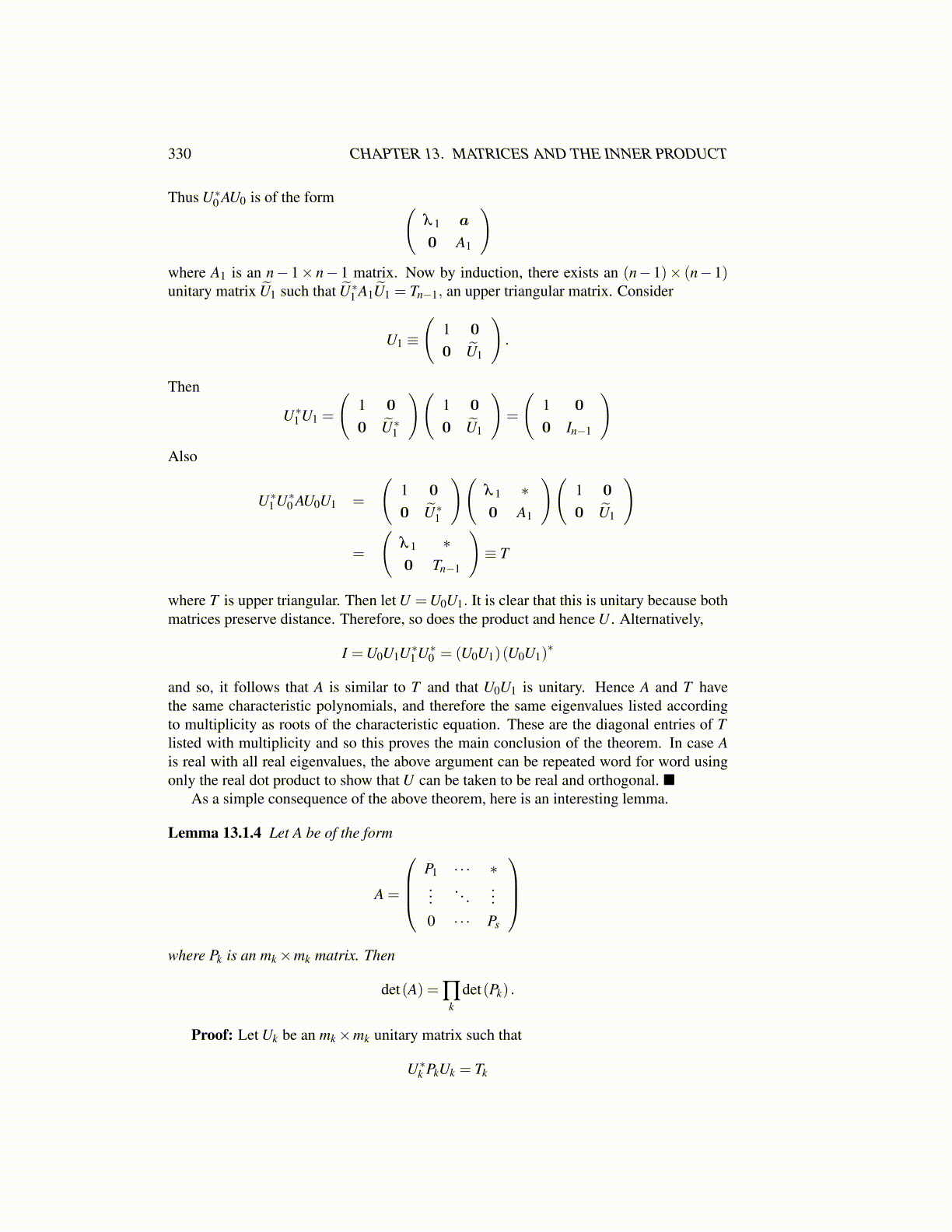
330 CHAPTER 13. MATRICES AND THE INNER PRODUCT
Thus U∗0 AU0 is of the form (λ 1 a
0 A1
)where A1 is an n− 1× n− 1 matrix. Now by induction, there exists an (n−1)× (n−1)unitary matrix Ũ1 such that Ũ∗1 A1Ũ1 = Tn−1, an upper triangular matrix. Consider
U1 ≡
(1 0
0 Ũ1
).
Then
U∗1 U1 =
(1 0
0 Ũ∗1
)(1 0
0 Ũ1
)=
(1 0
0 In−1
)Also
U∗1 U∗0 AU0U1 =
(1 0
0 Ũ∗1
)(λ 1 ∗0 A1
)(1 0
0 Ũ1
)
=
(λ 1 ∗0 Tn−1
)≡ T
where T is upper triangular. Then let U =U0U1. It is clear that this is unitary because bothmatrices preserve distance. Therefore, so does the product and hence U . Alternatively,
I =U0U1U∗1 U∗0 = (U0U1)(U0U1)∗
and so, it follows that A is similar to T and that U0U1 is unitary. Hence A and T havethe same characteristic polynomials, and therefore the same eigenvalues listed accordingto multiplicity as roots of the characteristic equation. These are the diagonal entries of Tlisted with multiplicity and so this proves the main conclusion of the theorem. In case Ais real with all real eigenvalues, the above argument can be repeated word for word usingonly the real dot product to show that U can be taken to be real and orthogonal. ■
As a simple consequence of the above theorem, here is an interesting lemma.
Lemma 13.1.4 Let A be of the form
A =
P1 · · · ∗...
. . ....
0 · · · Ps
where Pk is an mk×mk matrix. Then
det(A) = ∏k
det(Pk) .
Proof: Let Uk be an mk×mk unitary matrix such that
U∗k PkUk = Tk